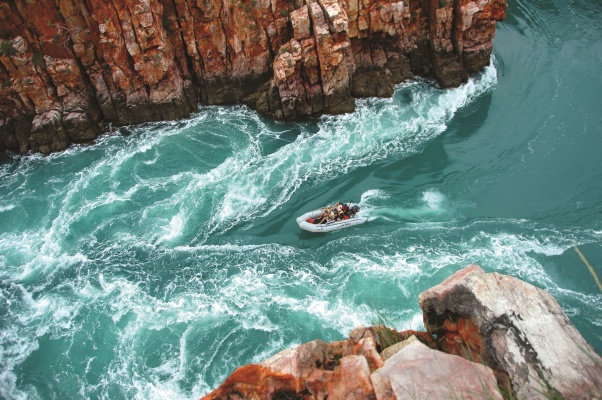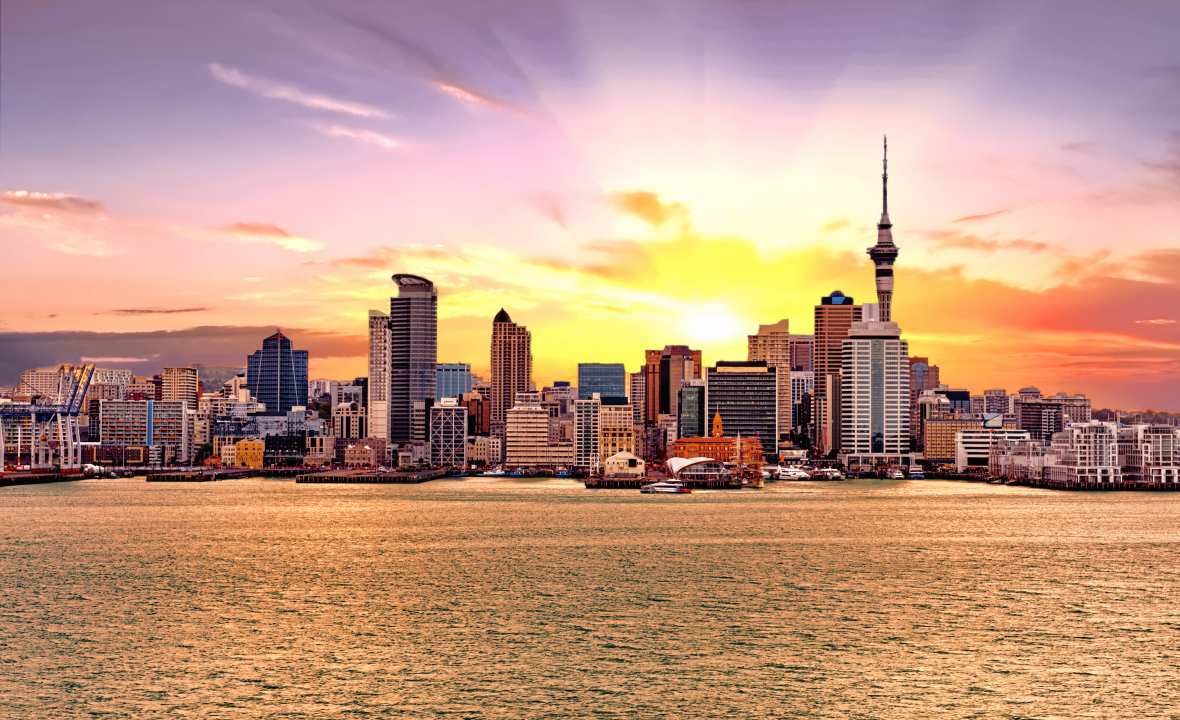One of the world's last great wilderness areas - The Kimberley & Broome

19 Jun 2020
The Kimberley in Western Australia’s remote far north, is a dramatic area of gorges, beaches, waterfalls and rugged, unforgiving outback. The unconstrained space, and wild and natural beauty of this region is unmatched and unforgettable.
The Kimberley has an immense and complex landscape that encompasses spectacular gorges, waterfalls and cave systems, pockets of lush rainforest and an astonishing variety of wildlife. Wild and wonderful, the Kimberley is one of the world's last great wilderness areas.
 Covering an area of some 421,451 square kilometres and inhabited by only 40,000 people, its sparse population means there is less than one person every 1,000 square kilometre!
Covering an area of some 421,451 square kilometres and inhabited by only 40,000 people, its sparse population means there is less than one person every 1,000 square kilometre!
Located north of the Tropic of Capricorn, the climate in the Kimberley is a tropical monsoon climate, defined by distinct wet and dry seasons. The Kimberley’s dry season is the perfect time to visit weather-wise, characterised by clear blue skies, easterly winds and balmy days with some chilly nights. The chance of rain is very unlikely. The Kimberley’s wet season, however, is a very different story. During the wet season, the Kimberley becomes hot and humid, sometimes turbulent, and above all unpredictable.
The remote Kimberley region was one of the earliest settled parts of Australia, with the first arrivals landing about 40,000 years ago from the islands of what is now Indonesia. It is home to hundreds of thousands of rock art paintings and drawings known as Bradshaw or Wandjina rock art. These beautiful and mysterious paintings are hidden in outback bush galleries on the huge escarpments and terracotta rock surfaces of the north Kimberley.
The first European to explore the region was Alexander Forrest in 1879. Forrest discovered and named the Kimberley district, and subsequently set himself up as a land agent specialising in the Kimberley. He was instrumental in the leasing of over 51 million acres in the region during 1883.
European settlement expanded during the late 19th century, when cattle were driven across Australia in search of good pasture lands with more Europeans arriving gold was discovered around Halls Creek and pearls were harvested at Broome.
 The cosmopolitan town of Broome has a laidback lifestyle and is the coastal gateway to the Kimberley. Take a camel ride along the picturesque Cable Beach at sunset, watch a movie in Australia’s oldest operating outdoor cinema at Sun Pictures or learn about Broome’s fascinating history as a major pearling town with a visit to a pearl farm or the Pearl Luggers Museum.
The cosmopolitan town of Broome has a laidback lifestyle and is the coastal gateway to the Kimberley. Take a camel ride along the picturesque Cable Beach at sunset, watch a movie in Australia’s oldest operating outdoor cinema at Sun Pictures or learn about Broome’s fascinating history as a major pearling town with a visit to a pearl farm or the Pearl Luggers Museum.
Broome is also home to the natural phenomenon that is the Staircase to the Moon. Observed between April and October, it occurs when the rising full moon reflects on the exposed mudflats at low tide, creating a spectacular optical illusion of a glittering staircase reaching up to the moon. You can also enjoy the lively Staircase to the Moon Night Markets held over the two nights of the full moon between May and October, the Thursday Night Market held between June and September or the popular Courthouse Markets which have become a Broome tourist attraction unto themselves!
Just 6 kilometres out of Broome is Gantheaume Point – one of the best paleontological sites in the world. It is a promontory where, at low tide, you can see the footprints of long-extinct dinosaurs and plant fossils, preserved in the reef rock for more than 125 million years. The contrast of the green scrub on the red cliffs where they meet the turquoise waters of the Indian Ocean, make this scenic coastline picturesque and memorable.
 See the Boab Prison Tree near Derby, a hollow tree that is 14 meters in diameter and believed to be more than 1,500 years old. From there, travel along the Gibb River Road – a 660-kilometre long outback highway that stretches between Broome and Kununurra, traversing the heart of the Kimberley. Explore Tunnel Creek, a 750-metre cave system carved through the Napier Range, housing stalactites, secret caves and a large variety of wildlife. Said to be over 350 million years old, Napier Range is home to the geological wonder of Windjana Gorge – where sheer cliffs tower above glistening white sands.
See the Boab Prison Tree near Derby, a hollow tree that is 14 meters in diameter and believed to be more than 1,500 years old. From there, travel along the Gibb River Road – a 660-kilometre long outback highway that stretches between Broome and Kununurra, traversing the heart of the Kimberley. Explore Tunnel Creek, a 750-metre cave system carved through the Napier Range, housing stalactites, secret caves and a large variety of wildlife. Said to be over 350 million years old, Napier Range is home to the geological wonder of Windjana Gorge – where sheer cliffs tower above glistening white sands.
There are plenty of picturesque gorges to explore in the Kimberley, where you can swim in refreshingly cool water holes, dip below cascading waterfalls or just sit back and admire the serenity. Geikie Gorge in the Geikie Gorge National Park is popular with photographers, with the base of the gorge walls bleached white by the flooding of the river over time. Take a cruise along the gorge and learn about the beautiful flora and fauna of this spectacular region. Stunning Cathedral Gorge, near the Bungle Bungles, is a natural amphitheatre and spacious cavern with incredible acoustics.
An iconic landmark, Mitchell Falls is a place of cultural and spiritual significance for the Wunambal people. The trek to the falls is a moderately difficult 6-kilometre roundtrip, and you can’t swim below the falls due to the presence of saltwater crocodiles. A helicopter flight over the spectacular tiered falls is a memorable way to experience them.
A natural phenomenon, Horizontal Falls are made up of massive tidal movements that create a waterfall effect, as water banks up one side of the narrow cliff passage. Described by David Attenborough as “one of the greatest natural wonders of the world”, the sight of turquoise coloured water rushing between the rugged red hills is something to behold.
 No visit is complete without a visit to the world-famous Bungle Bungles in Purnululu National Park. The intriguing black and orange striped beehive domes reach heights of up to 578 metres above sea level, contrasting beautifully with the lush green grass-covered plains they stand on.
No visit is complete without a visit to the world-famous Bungle Bungles in Purnululu National Park. The intriguing black and orange striped beehive domes reach heights of up to 578 metres above sea level, contrasting beautifully with the lush green grass-covered plains they stand on.
Lake Argyle, located near the East Kimberley town of Kununurra, is one of the largest man-made lakes in the Southern Hemisphere and is part of the Ord River Irrigation Scheme. It’s a picturesque spot for hiking, camping, fishing and picnicking and is best explored while doing a lunch cruise, or from the air on a scenic flight which also takes in the Bungle Bungles and the Argyle Diamond Mine.
El Questro Wilderness Park is over one million acres in size with a landscape that offers outstanding diversity. From rugged sandstone ranges and broad tidal flats, to rainforest pockets, gorges and waterfalls, it boasts four major river systems with an abundance of animals, fish and bird life congregating near the water sources.
Because of its size and isolation, the best way to experience this immense region is on a tour. For more information on how to discover the Kimberley for yourself, speak to Phil Hoffmann Travel.



